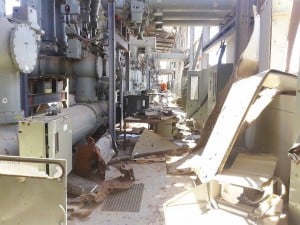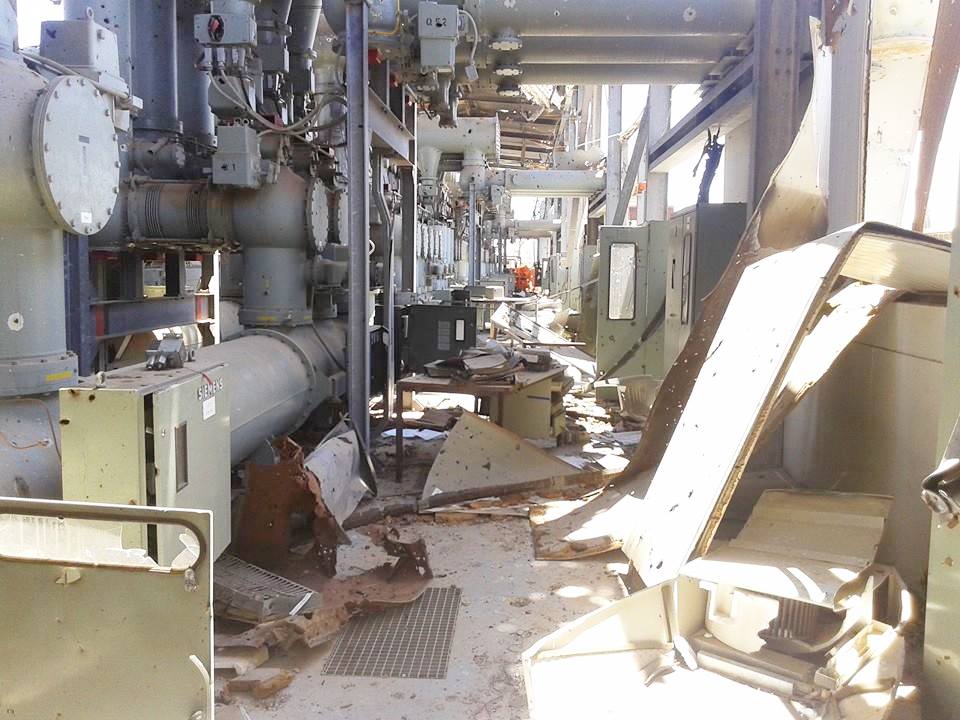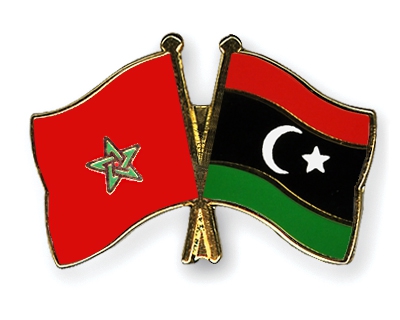By Adam Ali.

Benghazi, 1 August 2015:
Libya’s power grid in the east is on the verge of a catastrophic collapse, a senior . . .[restrict]GECOL engineer has warned. His warning is being echoed in the west of the country. Tripoli, Benghazi, Sebha, Kufra and Marj are among many places where power is out for hours at a time and in Benghazi this week, one district endured a cut lasting three days.
On Tuesday, a press conference in Tripoli on the power problems was interrupted by a power cut. So too was the trial of leading Qaddafi-era figures as the judge was reading out the death sentence on Saif Al-Islam .
Power shortages are also impacting production in oil fields, thus further reducing exportable output and indeed the supply of gas and oil to power stations.
Damage to infrastructure caused by fighting is particularly great in Benghazi, where GECOL engineers have sought to repair wrecked pylons, damaged transformers and blown-up underground cabling, often within range of Daesh mortars and snipers.
However the main challenge is maintenance, both at power stations and throughout the distribution network.
Noureddine Salem, an official in the Tripoli antigovernment of Khalifa Ghwell was telling a press conference this week that $1 billion would be needed to fix the network, when the lights went out on his meeting. Government sources in Beida are saying that $500 million will be needed. Both figures would seem to have been pulled out the air. However social media mockery at Salem’s claim that “humidity” was playing a key part in outages is probably misplaced.
A senior GECOL engineer has told the Libya Herald that damp on exposed live cabling and transformers was indeed causing short circuits which tripped out fuses further down the distribution network.
The state power utility’s director of distribution management Salah Abaar said that in the east at least, the power grid was on the verge of a catastrophic breakdown. The Hadaiq district has just gone without power for fully three days.
Three of Benghazi’s five power stations are seriously damaged and the distribution infrastructure has been wrecked during fighting over the last 12 months.
GECOL engineers who have braved sniper fire while they made crucial repairs can no longer cope with the workload, not least because of a chronic lack of spare parts.
Libya effectively has two separate grids, east and west, which connected at Ras Lanuf with a link that is now reportedly severed.
The eastern network runs from Ras Lanuf to Tobruk and Kufra and Tazerbu in the south. In normal times this received 1.6 gigawatts of power.
The key eastern power plants are the five in Benghazi. However the Bouatni station is wrecked and out of service thanks to the battles with Daesh that have been raging around it. Meanwhile South Benghazi and Guwarsha are also out of service, in large part because they can no longer receive fuel. This leaves two power plants, including the 300 megawatt Benghazi North, to struggle to meet even a proportion of the demand.
Foreign contractors who were upgrading all of the city’s power plants have long left. maintenance teams, lacking spare parts, are struggling to keep deteriorating generating sets online.
Besides damage caused by fighting, GECOL has also had to cope with a campaign of disruption to high tension transmission lines. In some cases, as in Sebha this April, damage has been caused by metal thieves. Mostly however the destruction of pylons has been a deliberate terrorist tactic. Several pylons in Guwarsha were blown up late last year. It has been impossible to replace them because the work so close to a battlefield would be too dangerous. [/restrict]








